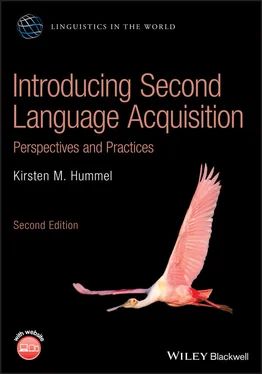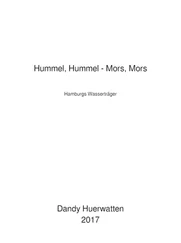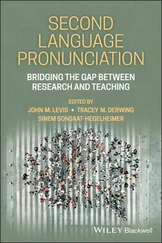Although, as pointed out in the previous section, in some cases L2 learners begin primarily with oral expressive skills just as do L1 acquirers, the sequencing of language skills is often different in the two learning situations: young children learn to understand the speech they hear around them before uttering their first words; only later do they learn how to read and write, and these skills are especially developed during the school years. In contrast, many older learners, and adults in particular, build on their already acquired literacy skills and may learn to read in an L2 and even write, before honing their speaking and oral comprehension skills. In many instances, adults opt to learn a new language on their own, outside of a classroom. For many such individuals, their method may largely consist of learning to read in the L2; acquiring speaking and listening skills may not be their primary goal, or even a goal at all.
Finally, we can point out another fundamental area of contrast in terms of attainment: while the L1 acquirer invariably becomes a fluent speaker of the language spoken in the environment, except for some exceptional cases (see Chapter 8), it is rare for an adult L2 learner to be able to pass for a native speaker in all respects (especially with regard to pronunciation). Almost invariably, noticeable pronunciation, lexical, and grammatical differences distinguish the learner from the native speaker. L2 learning has a much more variable outcome, with a broad range of proficiency levels resulting from the process. In contrast, although significant stylistic and dialectal differences occur among native speakers, the L1 is generally fully and fluently acquired regardless of environmental circumstances, although highly abnormal situations of deprivation or mental incapacity can indeed have substantial effects on language acquisition. A lively debate revolves around the issue of the extent to which learning a language after a given age (which some studies suggest is puberty while others set as young as 5 or 6 years of age), might be qualitatively different from language learning before such an age. The strongest evidence appears to be for an age‐determined limit for native‐like pronunciation in an L2. Many anecdotal as well as empirical studies indicate that individuals are much less likely to pass as native speakers when they are exposed to a language past a given age, an age limit that has been placed as young as birth (e.g. Hyltenstam and Abrahamsson 2003), although most studies suggest important changes occur somewhere from age 6 to 12 (e.g. Johnson and Newport 1989; Oyama 1976). We will look more closely at the evidence for age‐related language learning differences in Chapter 8, “The Age Factor.”
2.5.2 L1 and L2 acquisition parallels
As well as the significant differences associated with L1 and L2 acquisition, there are also a number of commonalities. One immediately obvious parallel in both L1 and L2 acquisition is that the learner needs to be exposed to the target language. For the young infant, although the precise quantity of exposure time or language data has not been determined, it is clear that he or she must have some exposure. The few documented cases of deplorable instances of unfortunate children who have been deprived of normal language exposure (such as “Genie,” whose case will be discussed in Chapter 8), reveal that they do not learn to speak like their peers. The need for exposure is also a necessary condition for L2 learners who must be exposed to the target language in order to ultimately learn that language. Again, the precise amount of language exposure necessary to allow L2 proficiency is difficult to establish. Although proficiency outcomes are often quite different in L1 and L2 situations, it is clear that exposure to target language input is vital in both cases.
Another point of similarity is that in both processes, whether it is the young child learning to produce her first words and phrases, or the learner of an L2, there appears to be a considerable amount of repetition. The young child naming important objects in her environment will repeat these often: “milk” when thirsty, or “da” to indicate the family dog. The following CHILDEStranscript excerpt (Brown, 1973; MacWhinney, 2000) from a dialogue between a mother and her daughter, aged 21 months, illustrates considerable repetition of words as the child (Eve) attempts to satisfy her urge for more cocoa:
CHILDES (Child Language Data Exchange System)
Online corpus that has grown to include numerous Internet‐accessible transcripts of dialogues between children and adults and older children.
Mother:
“It's almost time for lunch.”
Eve:
“More cocoa.”
Mother:
“No, tomorrow for breakfast.”
Eve:
“More cocoa.”
Eve:
“More cocoa.”
Eve:
“More cocoa.”
Mother:
“What are you doing out there?”
Eve:
“Eve more cocoa.”
Mother:
“I found another crayon, Eve.”
(Exercises at the end of the chapter provide an opportunity to use the CHILDES database.)
In a similar (albeit most likely less insistent) way, the second language learner trying to practice the new language with a conversational partner who speaks that language might be heard to repeat familiar words and phrases: for example, the French learner may repeat “ C'est bien ” and “ Oui, c'est ça ,” words and phrases that have been learned during classroom exchanges or from social encounters.
A related similarity is the way in which both L1 and L2 learners use prefabricated language units as formulaic sequences or expressions(or “routines”). Although it is true that children are very creative in their language production, it is also the case that they can be heard to repeat short phrases before using each of the words in isolation, as in saying “I don't know” before using “don't” or “know” in isolation or in other phrase contexts. Similarly, an L2 learner of French might be heard saying “ Je ne sais pas” (I don't know) or “ Comment ça va? ” (“How are you?”) that contain the verbs “ savoir ” (to know) or “ aller ” (to go), but this is before the learner is able to use these verbs productively in other sentences.
formulaic sequences (or expressions)
Phrases that learners learn and use as a whole unit, without analyzing into individual units (e.g. “How are you?” used as a single unit).
Another way in which these two language acquirers act similarly is that both young children and older L2 learners tend to understand much more than they can produce. A two‐year‐old can reveal his understanding of a fairly complex utterance “Go put your teddy bear on the blanket” when he ambles off to carry out his mother's instruction, while unable to string more than two words together in his own speech. By the same token, an adult may understand the French traffic instruction “ Vous pouvez stationner votre voiture derrière le panneau qui se trouve sur le côté droit de la rue ” (“You can park your car behind the sign that is on the right side of the street”) despite having little or no ability to produce a sentence with similar grammatical complexity.
There is considerable evidence that both L1 and L2 learners proceed in a systematic manner, characterized by periods of restructuring of their developing systems. As pointed out in the L1 acquisition discussion and illustrated by the “U‐shaped curve” figure, it has been observed that children learning English as their native language may first use irregular past tense forms correctly, such as “went” and “came,” but later, no doubt influenced by their exposure to the more regular past tense form ending in “–ed,” as in “walked” and “talked,” they extrapolate this rule to the irregular forms and produce “goed” and “comed.” Finally, at a later stage, they return to the correct irregular forms as in “went” and “came.” There is evidence that L2 learners similarly restructure their interlanguage system over time (Lightbown 1983).
Читать дальше












